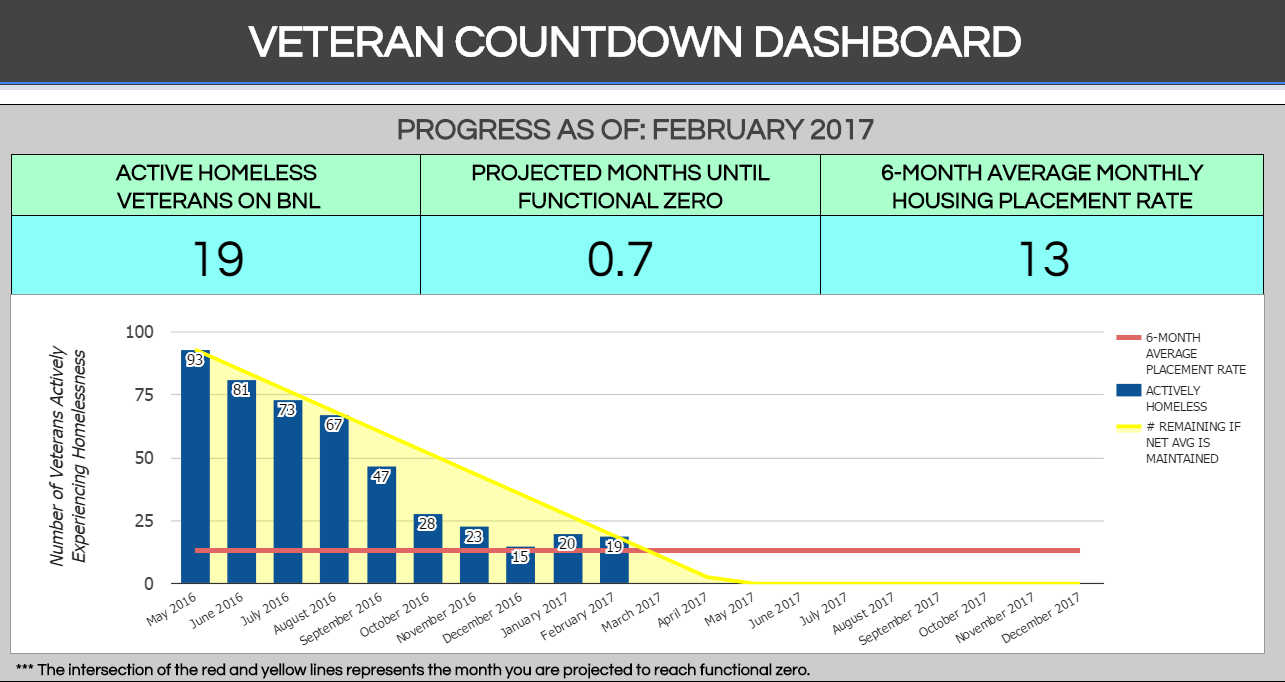
Over the past year the County of Marin, local service providers, and the City of San Rafael have begun adopting a dramatically new strategy for ending chronic homelessness. This new approach is called “Coordinated Entry,” and it has been pioneered, vetted, and proven successful in communities around the country.
This is Part 3 of a three-part series breaking down our strategy to end chronic homelessness in San Rafael and Marin. (READ PART 1) (READ PART 2)
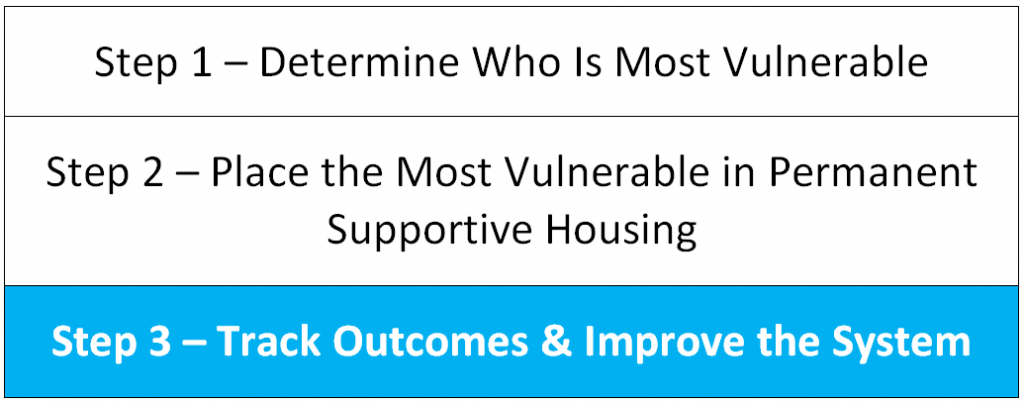
National Efforts to End Chronic Homelessness
After achieving a 91% reduction in chronic homelessness, Utah is perhaps the most famous example of a community using the “Housing First” model, but Utah is not alone.
In July of 2010, a nonprofit called Community Solutions launched a national effort called “The 100,000 Homes Campaign” to house 100,000 chronically homeless people. To participate, communities had to commit to using “Housing First” to house a specific number of people (50, 180, 1000, etc.). 230 communities signed on, and by July of 2014, the movement had housed 105, 580 people!
Whether it’s San Rafael, Marin, the Bay Area, or California, it can sometimes feel like we’re in this alone, but the 100,000 Homes Campaign is a great reminder that homelessness is a national issue that requires national collaboration.
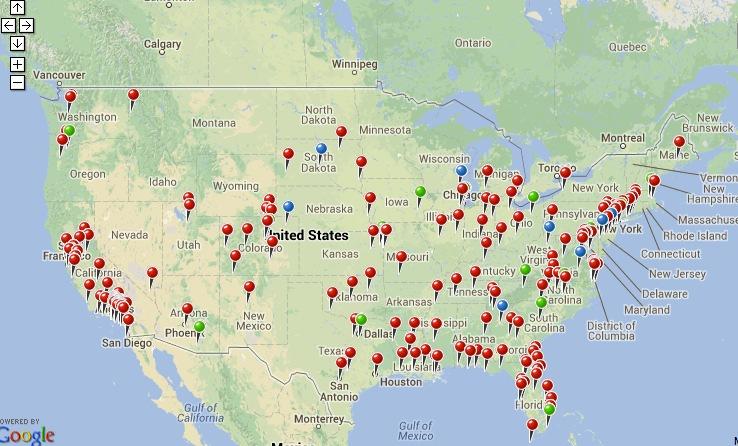
Our overarching strategy for ending chronic homelessness – 1) assess for vulnerability, 2) house the most vulnerable, and 3) use data to improve the system – in large part comes from the work initiated by the 100,000 Homes Campaign.
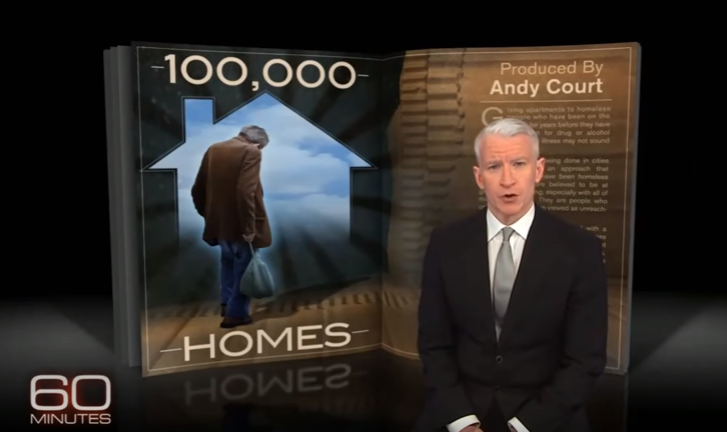
A Critical Insight
While it was fantastic to house over 100,000 chronically homeless people, Community Solutions learned it’s not enough to simply set a housing target, reach it, and call it a day. Solving homelessness is a process, not an endpoint. Homelessness is a multi-layered issue – that’s what makes it so hard to solve. Even as we house people, more people become homeless. Remember, in the same way a heart attack is a symptom of diet, smoking, genetics, lifestyle, etc., housing loss is similarly a symptom of deeper challenges:
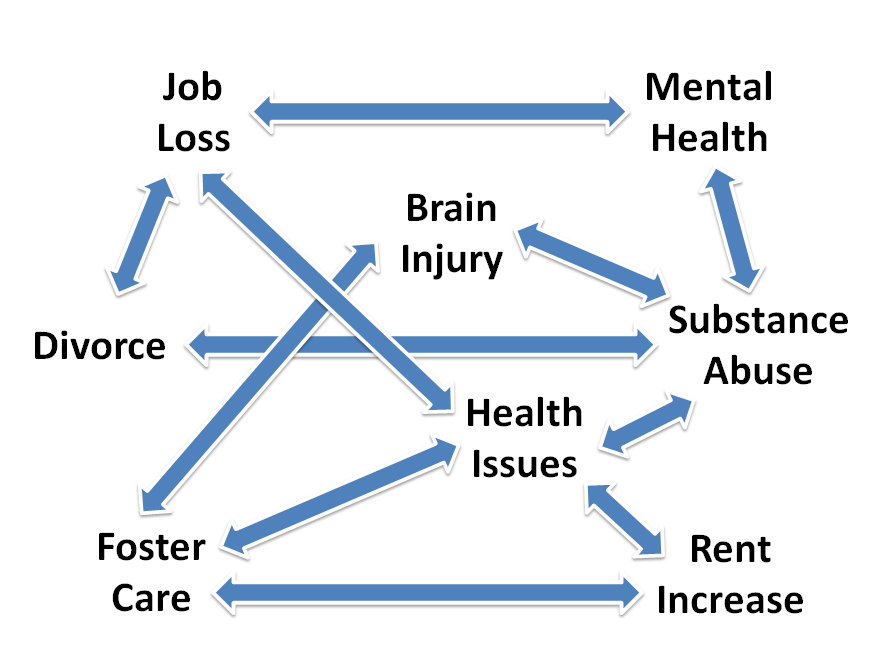
In this context, national data on chronic homelessness over the last six years shows that the 100,000 Homes Campaign led to a drop in homelessness, but it was far from 1-for-1:
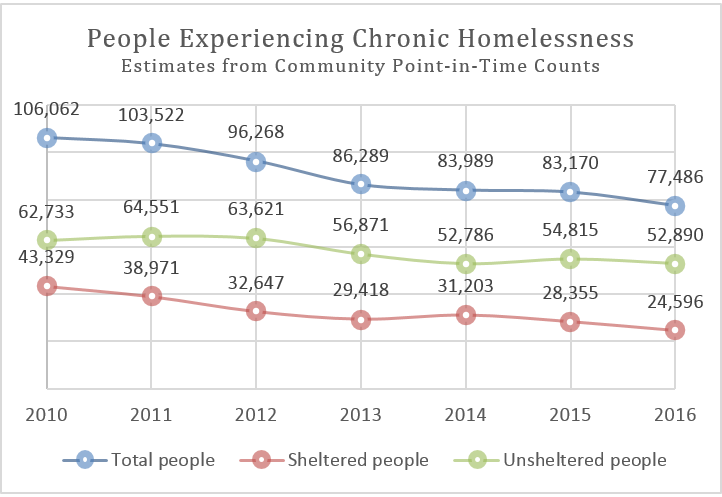
This isn’t totally surprising, though it can be a hard pill to swallow. We invest significant resources into ending homelessness, but it can often feel like we’re just treading water. That’s in large part because we’re not addressing the underlying symptoms; we’re not addressing the inflow. Take just one example: mental health.
According to the Substance Abuse and Mental Health Services Administration, 4% of all Americans suffer from the types of serious mental illness (schizophrenia, bipolar disorder) that can lead to homelessness if untreated. Sadly, these illnesses can tragically lead to people not wanting to be treated because they don’t think they’re sick. In Marin, 70% of people experiencing chronic homelessness report psychiatric or emotional challenges (read more).
Inflows and Outflows
It is easy to feel defeated by this dynamic, but Community Solutions is trying to reframe our thinking. Through a new campaign called “Built for Zero,” they are helping communities embrace these inflows (people becoming homeless) and outflows (people getting housed). It sounds painfully obvious, but “ending homelessness” is simply creating a system where:
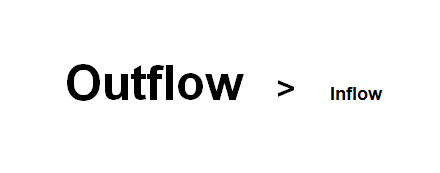
By using the steps outlined in Part 1 and Part 2, three states and 42 communities have used this process to end veteran homelessness (read more). How do they know they achieved this? That’s Step 3 – they created community dashboards using individualized data to monitor their progress in real-time. These dashboards provide:
- A Starting Point – Exactly how many people are chronically homeless when the campaign starts?
- An Inflow Rate – Month by month, how many people are becoming chronically homeless?
- An Outflow Rate – Month by month, how many people are exiting homelessness?
This is the community dashboard that Riverside County in Southern California used to track their progress ending Veteran homelessness:
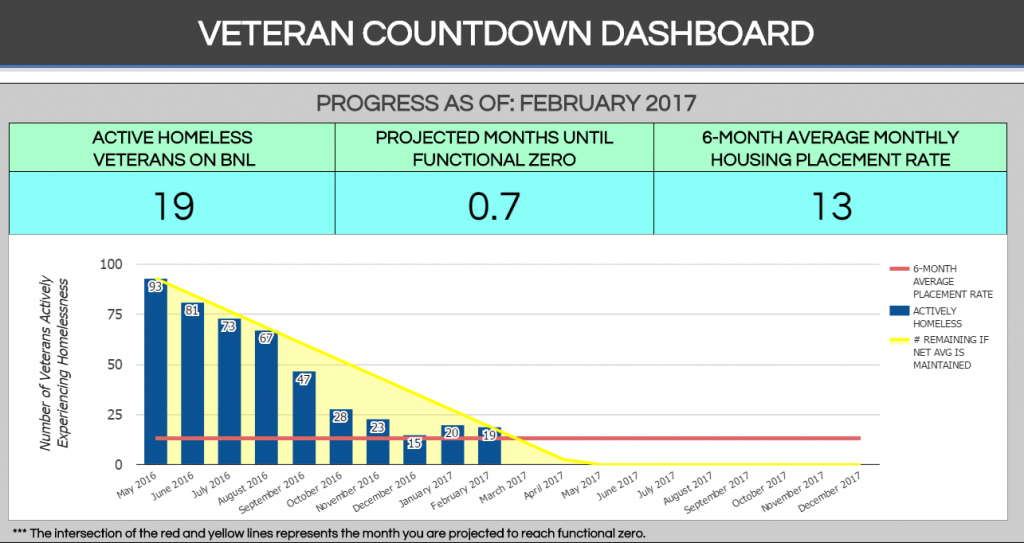
The red line represents “ending” homelessness, or what is referred to as “functional zero.” Functional zero is the point at which you’ve housed everyone on the street, and your housing placement rate is larger than your inflow rate. In the Riverside example, there is still an “inflow rate” of Veterans who become homeless, but because the community is able to house approximately 13 Veterans per month, their “outflow rate” prevents the overall number from rising. This is a resilient, sustainable response to homelessness.
Next Steps
One of the most common questions I receive is, “If we provide more services and housing, won’t more people come here?” By launching our own dashboard this fall, we will finally know:
- Is that actually happening?
- If it is, we will have individualized data to help us figure out how to modify our system to reduce the inflow rate.
Housing placement rates are always absolutely critical, but in this new system, “diversion” (i.e. decreasing the inflow rate) also plays a significant role.
- Can we reconnect people with friends and family? (St. Vincent’s already helps over 100 people a year relocate with the “Return to Residence” program)
- Are there more effective, low-needs services that can help people return to housing more efficiently?
- How do we use prevention and shelter services to help people maintain or rapidly return to housing before they reach chronic homelessness?
Our service providers and the County of Marin are already on the path to implementing Step 1, Step 2, and Step 3. Following this process, we truly can end chronic homelessness in Marin.

